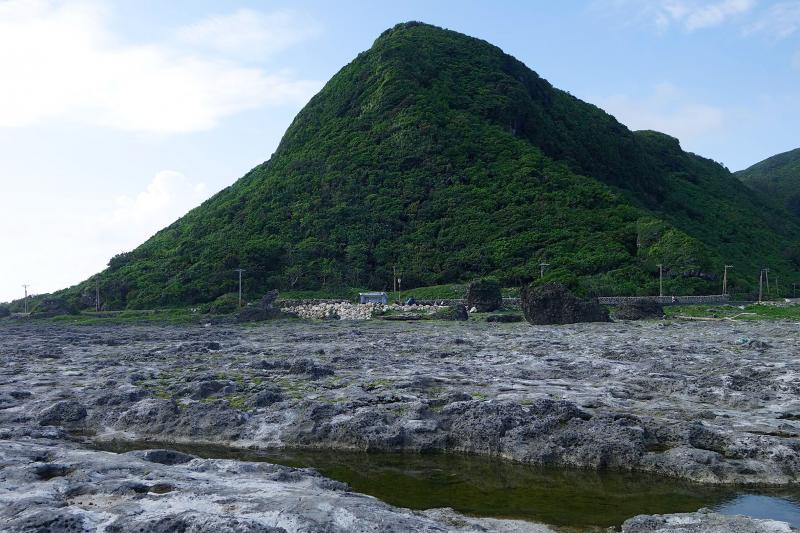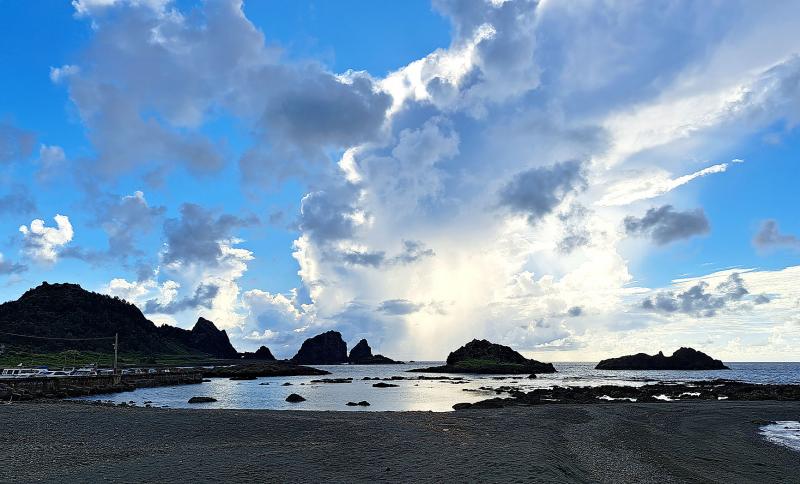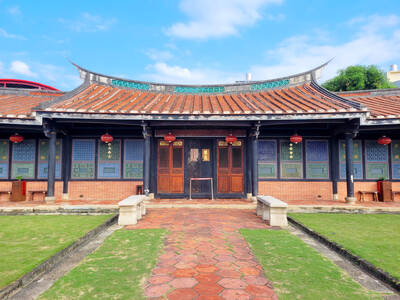Among the Amis people around Chenggong Township (成功) in Taitung County there is a story of a place called Malaulau, ma being a prefix and laulau, meaning “withered.” In fact, that is the old name for Chenggong in Hoklo (more commonly known as Taiwanese): “Malaulau” (麻荖漏) is taken from the Amis word.
What does that name refer to? In Amis oral histories, it is the place where a massive wave struck Chenggong, killing many people. The wave was quite localized and Amis communities to the north have no legends of that event. The east coast south of Yilan has good protection from the effects of tsunamis because the coastal shelf drops off rapidly and deeply, but Chenggong is one of the places a tsunami can reach due to the topography of the ocean bottom there.
TSUNAMIS AND TAIWAN

Photo: Michael Turton
Although the Japanese researchers who first encountered this tale in the late 1930s attributed it to an event in the 19th century, Academia Sinica researcher Masataka Ando, who has studied tsunamis and Taiwan for decades, could not assign it to any particular event in a 2013 paper that numerically simulated different kinds of tsunami-generating events. Ando argued that a 19th century event is unlikely simply because the coast was already populated by Han settlers, yet there is no record of a quake powerful enough to generate such a tsunami.
A more recent work, “The Sedimentological Record of Upper Holocene Tsunami Event in Fengbin, Taiwan,” suggests that Chenggong was hit by the 1771 tsunami that also struck Japan’s Miyako islands, based on affinities between deposits in Hualien County’s Fengbin Township (豐濱) and Miyako.
A later 2017 work, “Investigation of Possible Tsunami Events on the Eastern Coast of Taiwan: Case Studies of Lu-Ye, Changping, and Tulan,” identified evidence of tsunamis hitting elsewhere along the east coast. Evidently the depths off our coast do not defend Taiwan perfectly.

Photo: Michael Turton
Similarly, a 2015 study of coral boulders on Orchid Island (Lanyu, 蘭嶼), “Coral boulders along the coast of the Lanyu Island, offshore southeastern Taiwan, as potential paleotsunami records,” identified several out of place coral boulders that were likely due to tsunamis.
“The largest boulder on the island, at Site 14, has a long axis of 7.5m, and an estimated weight of 234 tons,” the authors write. “The gigantic size of this boulder indicates that it can only be moved by an extremely energetic wave.”
There is a legend on Orchid Island of a mouse that was told to swim to the bottom of the sea and drain the water after water covered the whole island.
The north coast is also vulnerable to tsunamis. An array of studies exploring the chronology of tsunami and super-typhoon deposits in that area has identified at least eight major tsunami events in the last 2,500 years. It seems every couple of hundred years or so a major wave rolls across the area. The most recent one, the 1867 tsunami, is well recorded in both the geological and historical records.
Southern Taiwan as well: in 1781 a tsunami flooded Jiateng Harbor (加藤) and the nearby homes in Pingtung County to a depth of approximately two meters, according to recorded testimony. Simulations show that tsunamis could inundate that area, much of which is below sea level due to subsidence caused by groundwater extraction.
Most of the threats that can trigger tsunamis, from submarine volcanoes to quakes on land and sea, to undersea landslides, exist in Taiwan, along with bonus occasional super-typhoons, so powerful that scientists often cannot tell which is which in the geological record.
There is a giant landslide scar on Turtle Island (龜山島) off Yilan County likely caused a giant wave. Imagine what an eruption or landslide there (the smaller volcano of the pair last erupted in 1785) might do to the Yilan floodplain?
TSUNAMI AND CIVIL DEFENSE DRILLS NECESSARY
Indeed, all of our nuclear plants are in areas that get smacked by tsunamis. If you’ve ever vacationed along the east coast, you’ve probably seen the signs for evacuation routes and shelter sites.
More tsunami drills are necessary, not only for their own sake, but because drills for tsunamis could get around the problem of getting people to do civil defense: present it as natural disaster training. After all, the skills that are needed for handling battle damage and battle casualties have much overlap with those for handling natural disasters.
Civil defense, as well as reserve forces like the territorial militia that some observers advocate, force citizens to experience in their bodies the idea of war. Many people do not want to face that. The reader might object that Taiwan’s four-month conscription already does that, but for many males, it is a gigantic waste of time. They do not acquire any of the skills, experiences and fears that they need.
Taiwan already has an annual National Disaster Day on Sept. 21. Usually a drill is held, but it is quite perfunctory. No techniques are taught, no management experience gained, no lessons learned. On that day in 2020, Tainan held an earthquake drill, a good start.
In the wake of the visit of US House Speaker Nancy Pelosi and the Chinese live-fire exercises near Taiwan, nothing could be more appropriate than to turn Sept. 21 into a national day of drills, with a holiday focused on learning practical and useful techniques for coping with disaster, people practicing evacuating to shelters (take a moment: does the reader know where the nearest shelter is? Do you know how to get there if buildings have collapsed and streets are blocked?) and government officials practicing implementing disaster plans. Bring in experts, particularly from Ukraine, to create scenarios and teach locals how to cope.
As the redoubtable T. H. Schee, who has long been involved in civil defense activities, remarked on Twitter, what the Chinese military exercises have highlighted is Taiwan’s woeful lack of civil defense preparedness. The cyber attacks from China highlight how unprepared Taiwan is to function when our infrastructure is saturated with missile attacks.
Ukraine committed to civil and territorial defense forces after Russia annexed pieces of its south. This month China’s temper tantrum has given us a warning. Sept. 21 is a few weeks away. We need to get moving on turning paper ideas into practical accomplishments.
Because when the missiles start falling for real, it will be too late.
Notes from Central Taiwan is a column written by long-term resident Michael Turton, who provides incisive commentary informed by three decades of living in and writing about his adoptive country. The views expressed here are his own.

Last week saw the appearance of another odious screed full of lies from the People’s Republic of China (PRC) Ambassador to Australia, Xiao Qian (肖千), in the Financial Review, a major Australian paper. Xiao’s piece was presented without challenge or caveat. His “Seven truths on why Taiwan always will be China’s” presented a “greatest hits” of the litany of PRC falsehoods. This includes: Taiwan’s indigenous peoples were descended from the people of China 30,000 years ago; a “Chinese” imperial government administrated Taiwan in the 14th century; Koxinga, also known as Cheng Cheng-kung (鄭成功), “recovered” Taiwan for China; the Qing owned

When 17-year-old Lin Shih (林石) crossed the Taiwan Strait in 1746 with a group of settlers, he could hardly have known the magnitude of wealth and influence his family would later amass on the island, or that one day tourists would be walking through the home of his descendants in central Taiwan. He might also have been surprised to see the family home located in Wufeng District (霧峰) of Taichung, as Lin initially settled further north in what is now Dali District (大里). However, after the Qing executed him for his alleged participation in the Lin Shuang-Wen Rebellion (林爽文事件), his grandsons were

I am kneeling quite awkwardly on a cushion in a yoga studio in London’s Shoreditch on an unseasonably chilly Wednesday and wondering when exactly will be the optimum time to rearrange my legs. I have an ice-cold mango and passion fruit kombucha beside me and an agonising case of pins and needles. The solution to pins and needles, I learned a few years ago, is to directly confront the agony: pull your legs out from underneath you, bend your toes up as high as they can reach, and yes, it will hurt far more initially, but then the pain subsides.

A jumbo operation is moving 20 elephants across the breadth of India to the mammoth private zoo set up by the son of Asia’s richest man, adjoining a sprawling oil refinery. The elephants have been “freed from the exploitative logging industry,” according to the Vantara Animal Rescue Centre, run by Anant Ambani, son of the billionaire head of Reliance Industries Mukesh Ambani, a close ally of Prime Minister Narendra Modi. The sheer scale of the self-declared “world’s biggest wild animal rescue center” has raised eyebrows — including more than 50 bears, 160 tigers, 200 lions, 250 leopards and 900 crocodiles, according to